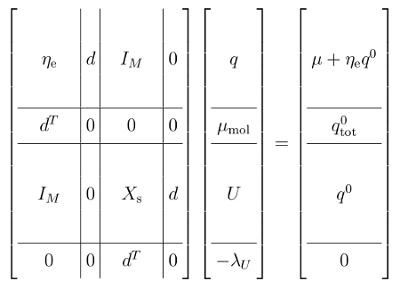Coarse-grained Density Functional Theory
Coarse-grained Density Functional Theory
Promotor(en): T. Verstraelen, D. Van Neck /MM_13_MODEV03 / Model and software development, Many-particle physicsDensity Functional Theory (DFT) plays a major role in the field of computational chemistry and material science. It is a quantum mechanical model for the electronic many-body system and makes it practically feasible to study chemical reactions, material properties, the structure of liquids, etc. at the atomic scale on high-performance computing (HPC) facilities. When the molecular system becomes too large, conventional DFT is no longer computationally feasible. For such systems, one may use more approximate models instead, e.g. force-field models completely neglect the electronic structure and approximate the interactions between atoms or molecules with classical energy terms.
Historically, there has always been a huge methodological gap between electronic structure and force-field models. We recently proposed the Atom-Condensed Kohn-Sham approximated to second order (ACKS2) model, which is a coarse-grained form of DFT that can describe the electron distribution at a low computational cost. (The working equations are shown below.) It is feasible to use ACKS2 as a component of a force-field model and hence it bridges the gap between these two fields.

Figure: Working equations of the ACKS2 model. For a detailed description of the symbols, see J. Chem. Phys. 138, 074108 (2013). The ACKS2 model opens up a new line of research with many topics left to be explored. The model can be generalized, validated and improved in several ways. Possible topics include the modeling of dispersion interactions based on the ACKS2 model, the inclusion of Hartree-Fock exchange in the derivation, the validation of the model for typical test sets of molecules found in the literature, and so on.
Based on the interests of the student, this thesis can have different goals. Broadly speaking, there are two possible scenarios. On the one hand, there are several theoretical developments of the ACKS2 model that are attractive for the theory-inclined students. On the other hand, the quality of the ACKS2 model needs to be tested with computational assessments. For both scenarios, there is ample experience at the Center for Molecular Modeling to turn this proposal into a fascinating research project with clear perspectives on a publication in a highly-ranked journal.
- Study programmeMaster of Science in Engineering Physics [EMPHYS], Master of Science in Physics and Astronomy [CMFYST]KeywordsModel development, Density functional theory, Force fieldsRecommended coursesComputational physics (C001827); Many-body physics (C001759)

